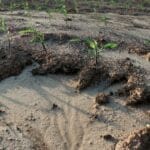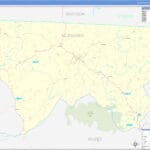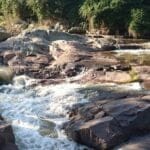Kanosh, Utah. A name whispered on the wind, echoing through the canyons of time. Nestled at the foot of the Pahvant Mountains in Millard County, this small town holds a story far larger than its 0.9 square miles. It’s a story of two cultures intertwined, of a Native American leader who embraced progress, and of a community that perseveres amidst the dramatic beauty of the American West. Join us as we journey through Kanosh’s past and present, uncovering the threads that weave together its unique tapestry.
A Legacy Etched in Stone and Soil: The Pahvant and Chief Kanosh
This isn’t just another town founded by pioneers. Kanosh’s story begins long before the arrival of Mormon settlers, with the Pahvant band of the Ute tribe and their remarkable leader, Chief Kanosh. Born around 1821 near present-day Spanish Fork, Kanosh wasn’t destined to be just another chief. He emerged as a beacon of diplomacy in a turbulent era, a stark contrast to his predecessor, Chief Chuick, who favored a more forceful stance against westward expansion. What foresight led Kanosh to choose the path of negotiation? Perhaps he understood that survival in a changing world required adaptation and understanding.
Corn Creek, the lifeblood of the Pahvant Valley and the heart of Kanosh’s territory, offers a glimpse into his forward-thinking nature. Even before the arrival of Mormon settlers in 1859, Kanosh established his own farm, embracing agricultural practices that would later become integral to the region’s development. This willingness to embrace new ideas likely paved the way for a more peaceful transition when pioneers, led by Peter Robison and Peter Boyce, began to settle the area.
The true turning point arrived in 1867. Under the guidance of Brigham Young and, crucially, with the blessing of Chief Kanosh, the town we know today as Kanosh was officially established. This act of collaboration, of two leaders choosing cooperation over conflict, shaped the town’s destiny. The very name “Kanosh,” bestowed upon the town in the chief’s honor, speaks volumes. While its precise meaning remains shrouded in mystery, some believe it might derive from an English word related to cooking. A more likely theory, however, suggests a Ute origin, a linguistic puzzle yet to be unraveled. Ongoing research may one day illuminate the true meaning, adding another layer of richness to this captivating tale.
Discover the charm of small-town living in Karns City PA and explore the historic Adirondack beauty of Keeseville New York, two unique destinations offering distinct experiences.
From Corn Creek to Kanosh: A Town Forged in Cooperation
The transformation from Corn Creek, the early settlers’ name for the area, to Kanosh symbolizes a profound shift—a transition from separate existence to shared space. The fertile lands surrounding Corn Creek, once solely the domain of the Pahvant, became a point of connection between two distinct cultures. Imagine those early days, the mingling of traditions, the shared challenges and triumphs of building a community in the heart of the high desert. What stories could those fields tell if they could speak?
The official founding of Kanosh in 1859 by Peter Maughan and other pioneers marked the beginning of a new chapter. Paul Padilla’s 1994 article in the Utah History Encyclopedia offers valuable insights into this pivotal period. But it’s the collaboration between Chief Kanosh and Brigham Young in 1867 that truly cemented the town’s identity as a place born from cooperation, a place where the spirit of understanding, at least for a time, prevailed over the tensions of westward expansion.
Today, Kanosh stands as a quiet testament to this shared history. With a population of 474 (as of the 2010 census, reflecting a slight decline from 485 in 2000), it embodies the essence of rural life. This close-knit community, nestled beneath the majestic Pahvant and South Mountains, offers a glimpse into a way of life far removed from the hustle and bustle of urban centers. While the 2010 census data lacks specific details on households and families, the overall population trend suggests both the challenges and resilience of small-town America.
Experiencing Kanosh: A Journey Through Time and Landscape
What draws visitors to this small town tucked away in Millard County, 15 miles south of Fillmore? It’s more than just history; it’s the tangible connection to the past, the breathtaking natural beauty, and the unique opportunities for adventure and relaxation.
The dramatic climate, with its scorching summers and bitterly cold winters (likely reflecting a high-desert Köppen climate classification), shapes the rhythm of life in Kanosh, a town perched at an elevation of 5,020 feet. The clean, crisp air and brilliant night skies, unmarred by city lights, offer a sense of tranquility. For those seeking outdoor adventure, the Pahvant Mountains beckon with hidden trails waiting to be explored. The town’s website, probably accessible at kanoshtown.com, promises “outstanding outdoor recreation,” from hiking and mountain biking to winter sports at nearby Eagle Point Resort. And for a truly rejuvenating experience, the Meadow-Kanosh Hot Springs offer a welcome respite, a chance to soak away the cares of the world while surrounded by the stunning landscapes of Millard County.
Finding lodging in Kanosh is likely an experience in itself. While nearby towns like Beaver, Fillmore, Richfield, and Salina might offer traditional hotels, Kanosh likely provides something more unique. Bob’s Station & Motel, a local establishment, probably offers a taste of true Western hospitality. Airbnb might also connect travelers with cozy homes nestled within the heart of the community, providing an intimate glimpse into Kanosh’s unique charm.
Kanosh Today: Echoes of the Past, Whispers of the Future
Kanosh, Utah, isn’t just a dot on the map; it’s a living testament to a complex and interwoven history. It’s a place where the spirit of Chief Kanosh, his commitment to peaceful coexistence, and his embrace of progress still resonate. While his physical presence may be gone, his legacy lives on in the name of the town, in the stories passed down through generations, and in the enduring presence of the Pahvant Ute people. What challenges do they face today? What are their hopes for the future? Their stories, interwoven with those of the town’s residents, offer a profound understanding of life in rural Utah. This is an ongoing narrative, a story that continues to unfold, adding new layers to the rich tapestry of Kanosh, Utah.
Further research into the Pahvant Ute language and culture could shed even more light on the meaning of “Kanosh” and the intricacies of their interactions with the Mormon settlers. Historians continue to explore this period, and our understanding of this unique chapter in Utah’s history continues to evolve. Perhaps, hidden within those unexplored corners of history, lie even more fascinating details waiting to be discovered.
Understanding Kanosh’s Demographics
The 2000 census provides a more detailed snapshot of Kanosh’s demographics: a population of 485, with 165 households and 130 families. The racial makeup was predominantly White (95.88%), with a small percentage of Native Americans (1.03%) and other races (2.68%). Hispanic or Latino residents comprised 3.71% of the population. It’s noteworthy that 35.2% of households included children under 18, suggesting a vibrant family presence within the community.
The slight population decline to 474 by 2010 raises intriguing questions. What factors contributed to this shift? Was it a reflection of broader economic trends impacting rural communities, or were there other local circumstances at play? Further investigation into these demographic changes could offer valuable insights into the challenges and opportunities facing small towns like Kanosh.
Exploring Local Governance and Services
The inner workings of Kanosh’s local government remain an area ripe for exploration. The town’s official website, likely kanoshtown.com, probably holds a wealth of information about its structure, departments, and the essential services provided to residents. Understanding these aspects of Kanosh’s civic life can provide a deeper appreciation for the day-to-day realities of this small community. From road maintenance to community events, these services form the backbone of Kanosh’s functionality and contribute to the unique character of small-town living. What makes Kanosh’s local government distinct? How does it address the specific needs of its residents? These questions offer avenues for further exploration and a richer understanding of the town’s civic fabric.
- Discover Long Black Pepper: Flavor & Health Benefits - April 25, 2025
- Shocking Twists: The Grownup Review: Unreliable Narration - April 25, 2025
- A Quiet Place Book vs Movie: A Deep Dive - April 25, 2025















